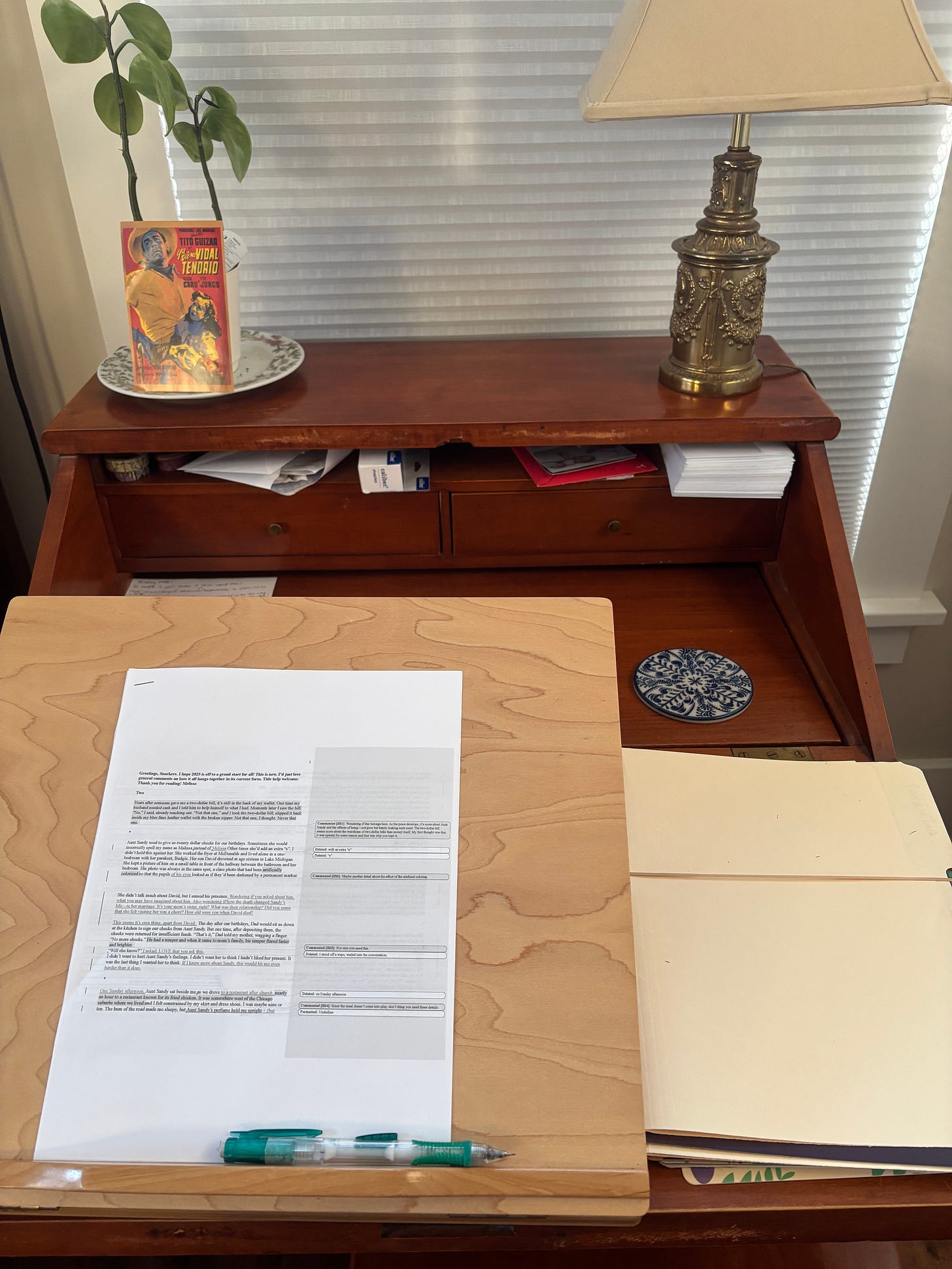When I draft an essay, I routinely put it away for several weeks before taking another pass at it. Wash rinse repeat. After several iterations of this, I might share the piece with my writing group or another trusted reader. But sometimes, no matter how the process has worked in the past, I can’t get the essay to sing. Oftentimes, such fumbling is obvious at the outset.
A good essay convinces at every turn, beginning with its opening. A master at this is “Beat the Old Lady Out,” by Debra Gwartney. It appeared in the April 2021 issue of The Sun.
The empty shelf in the baking aisle means, once again, there’s no yeast. I can’t find yeast in any store between Eugene and our house in the Oregon woods fifty miles away. It’s summer, and our state is pretty much open now—toenails painted in salons and beer on tap in bars and cases of hand sanitizer stacked in storerooms—but it’s still ridiculously hard to buy a jar of yeast.
Notice how those first three sentences fixate us in scene and that second line uses the personal pronoun “our.” Gwartney is searching for yeast and that third line uses the concrete detail of the hand sanitizer to imply the pandemic. I’m already intrigued, are you? I trust this narrator and want to continue with her.

What I want even more than yeast is to join the racial-justice protesters gathered at the park I passed on my way into town: maybe a dozen folks who keep it up, week after week, with their homemade signs and pepper-spray goggles. But I can’t. A husband at home with cancer relegates me to bystander status during the pandemic. I make donations and call senators, but I must watch from a distance.
Again, firmly entrenched in time—but now we learn about her husband and that he has cancer (Barry Lopez, fyi). I’m still there. But it’s the third graph that pins me down, helps me grasp the importance of this journey for yeast, and gives me a sense of where we’re headed. “Baking is a visceral connection to my grandmothers and great-grandmothers and the women who came before them, who survived all manner of challenge and emerged on the other side of tragedy to set a loaf of bread on the table.” Here the essay opens up: we see that it’s not going to remain in Gwartney’s own kitchen, but will travel into the past and to her grandmother’s loaves of bread.
Good essays convince at every turn, through an accretion of detail and a steady unspooling narration.
Other writers are our best writing teachers and Debra Gwartney is one of my favorites.
MY grandmother’s desk
Mary Karr says, “However many intellectual pleasures a book may offer up, it’s usually your emotional connection into the memoir’s narrator that hooks you in. And how does she do that? A good writer can conjure a landscape and its peoples to live inside you and the best writers make you feel they’ve disclosed their soft underbellies. Seeing someone naked thrills us a bit.”
So how does Gwartney slowly rope us in and make us care for this narrator? For starters, she takes her time. In the essay, she uses that search for yeast to explore her own love for baking and how her grandma and extended family relatives cared for her through the foods they made for one another. Later she uses the lessons of these baked goods to try and reassure her daughters when she was stuck in a dead-end marriage (pre-Lopez) and barely making ends meet.
Good essays can travel vast distances with the right narrator, one who convinces at every turn, and takes their time getting there.




Love this!